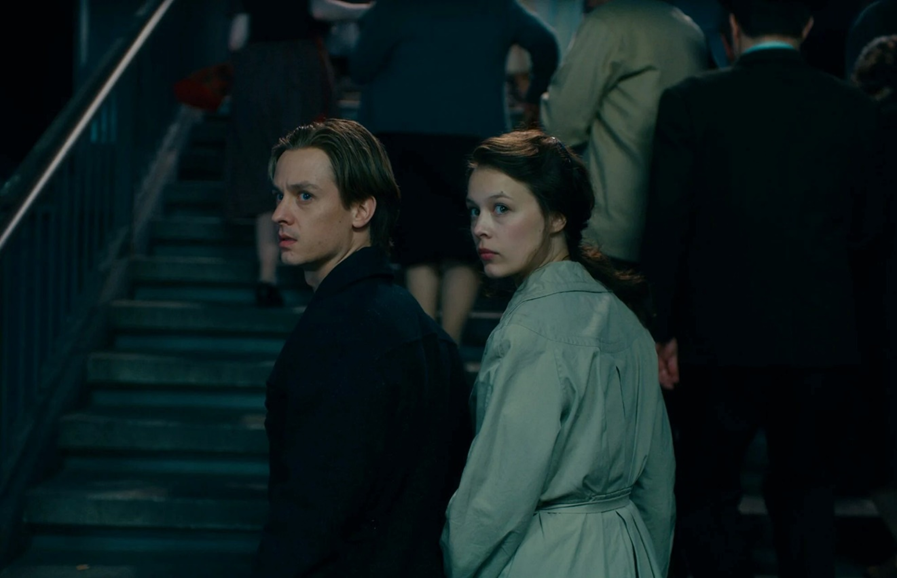
2. From “Heil Hitler” to “Companion”: Interdiction of variety / difference
The opening scene of the film is set in Dresden, in 1937 when “modern art” was considered “decadence” and “moral deformity” by Nazi Party. The railing against “modern art” relied on a kind of “madness” and also “devaluing art” such as the discourse of the tour guide (Lars Eidinger) by gesturing at Kandinsky painting from 1921 unveiled the crucial perception of Nazi Party relied on economy, intolerance of difference, desire to remain in the “Past”. This evidence was illustrated by the speech of the tour guide to Kurt (Tom Schilling): “I think you could do this, too. […] and ask your parent how much they would pay for it!” Nevertheless, Kurt and his beloved aunt Elisabeth (Saskia Rosendahl) did not partage the same idea with the tour guide such as Elisabeth asserted by whistling to the ears of Kurt that: “Don’t tell anybody, but I like it.” Although the main goal of Nazi Part relied on jeering “modern art” by this exhibition, it played a crucial role on Kurt’s way of thinking, perception on art thanks to orientation of his beloved aunt.
This scene reverberates throughout the film “Never Look Away” as how political ideologies could be damaged art by interdiction of variety / difference to insisting for the stay the “same” pursuing only one type “communally” accepted ideology. Because although Nazi were defeated in the Second World War II, its crucial philosophy did not change: rejection of “moder art”!
After the war, The Communists who are saluting each other as “Companion”, reminding other vector of Hitler’s salute “Heil Hitler”, did not give permission to spread “modern art” by emphasizing “Socialist Realism” as an art style. This evidence was shown by the dialogue between Kurt and his professor who was criticizing the perception of modernist artist by referring to Picasso to jeer subjectivity / personality “me, me, me”. In addition to this, Carl Seeband (Sebastian Koch) and Kurt’s dialogue illustrate the continuity of Hitlerism throughout Communism:
Professor Carl Seeband: Socialist realism?
Kurt Barnert: Is there anything else?
Professosr Carl Seeband: I hope not.”
“I hope not” permit itself to elaborate the similarity with the ideology of Hitler, in other way, the war ended up, but Hitler’s spirits continue by communists…
In this cleavage authoritarian, Kurt finds himself at the core of dilemma between his artistic desire / creativity / perception and ongoing artistic trends based on socialist realism. At the end Kurt and his beloved wife Ellie (Paula Beer) decide to escape to West German side. At the gar scene, the author of the film manages poetically to settle dialogue between after and during the World War II by the way of looking behind of protagonists, when guardian stop a man to control its suitcase! That scene illustrates in a way idyllic both nothing changes and the communism as a successor of Hitlerism…: fear, inquietude, forced to obey communist rules, interdiction, discrimination, forbidden who / which is different….!